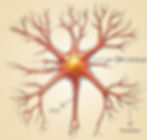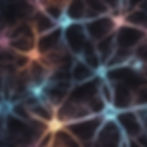Unveiling the Mysteries of the Brain: An In-Depth Exploration

Neuroscience is the scientific study of the nervous system, a field that encompasses a wide range of topics and disciplines. From understanding how neurons communicate to exploring the complexities of human behavior, neuroscience seeks to unravel the mysteries of the brain and its profound influence on every aspect of our lives.
As we delve into the intricacies of neuroscience, we embark on a journey to uncover the profound impact of the brain on our existence.
Table of Contents
Neurons: The Building Blocks of the Brain
The Brain's Remarkable Adaptability
Neurons: The Building Blocks of the Brain
Neurons are the fundamental units of the brain and nervous system. Each neuron consists of three main parts:

Cell Body (Soma): Contains the nucleus and is responsible for maintaining the cell's health.
Dendrites: Branch-like structures that receive signals from other neurons and convey this information to the cell body.
Axon: A long, slender projection that transmits electrical impulses away from the cell body to other neurons, muscles, or glands.
Neurons communicate through a process called synaptic transmission. When an electrical impulse (action potential) reaches the end of an axon, it triggers the release of neurotransmitters, chemical messengers that cross the synaptic gap and bind to receptors on the receiving neuron. This process is crucial for the brain's ability to process and respond to information.
In addition, Neuroglial cells—usually referred to simply as glial cells or glia play an essential role in supporting and protecting neurons. The three types of glial cells that can be found include:
Astrocytes: Provide structural support, regulate blood flow, and maintain the chemical environment around neurons.
Oligodendrocytes: Produce myelin, a fatty substance that insulates axons and speeds up signal transmission.
Microglia: Act as the brain's immune cells, defending against infections and removing debris.
The Brain: An Overview

The human brain is an intricate and astonishing organ, weighing approximately three pounds and containing around 86 billion neurons and over 100 trillion synaptic connections. These neurons form an intricate network, transmitting electrical and chemical signals that govern everything from our thoughts and emotions to our movements and sensations. The brain is divided into several key regions, each responsible for different functions:
Cerebrum: The largest part of the brain, responsible for higher cognitive functions such as thinking, learning, and memory. The cerebrum consists of two cerebral hemispheres the outer layer- gray matter(the layer being densely packed with neurons and their dendrite branches) and the inner layer - white matter(containing a thick mass of long fibers called axons that connect the grey matter nerve cells to one another). There are four lobes in the cortex, the frontal lobe, parietal lobe, temporal lobe, and occipital lobe:
Hypothalamus: Regulates body temperature, hunger, thirst, and other biological needs.
Pituitary gland: Produces hormones that regulate growth, metabolism, and stress responses.
Pineal gland: Secretes a hormone called melatonin to regulate the body’s circadian rhythm (sleep patterns).
Pons: Transmits signals between different areas of the brain and helps regulate sleep and breathing.
Medulla oblongata: Controls essential body functions such as breathing, heart rate, and circulation.
Cerebellum: Coordinates motor movement regulation and maintains balance.
Thalamus: Processes and relays sensory information in visual, auditory, somatosensory, and gustatory systems.
Corpus callosum: A thick bundle of fibers that ensure both sides of the brain can communicate and send signals to each other.
Midbrain: Involved in functions such as eye movement, hearing, and motor movement.
Neuroplasticity: The Brain's Remarkable Adaptability

One of the most astonishing discoveries in neuroscience is the concept of neuroplasticity, the brain's ability to reorganize itself by forming new neural connections throughout life. Throughout this process, neural pathways are constantly rewired and melded in response to changing experiences, habits (good and bad), and stimuli. This adaptability allows the brain to recover from injuries, adapt to new learning experiences, and even compensate for lost functions. As the neurons create new connections or strengthen old ones, patterns in our daily routine start to build up.
The Future of Neuroscience
The field of neuroscience is rapidly advancing, driven by technological innovations and interdisciplinary collaboration. Techniques such as functional magnetic resonance imaging (fMRI), optogenetics, and many more are providing unprecedented insights into brain activity and function. As we continue to explore the brain's complexities, the potential for ground-breaking discoveries and applications is immense. The journey into neuroscience is both intellectually stimulating and profoundly rewarding, offering endless opportunities for discovery and innovation.




